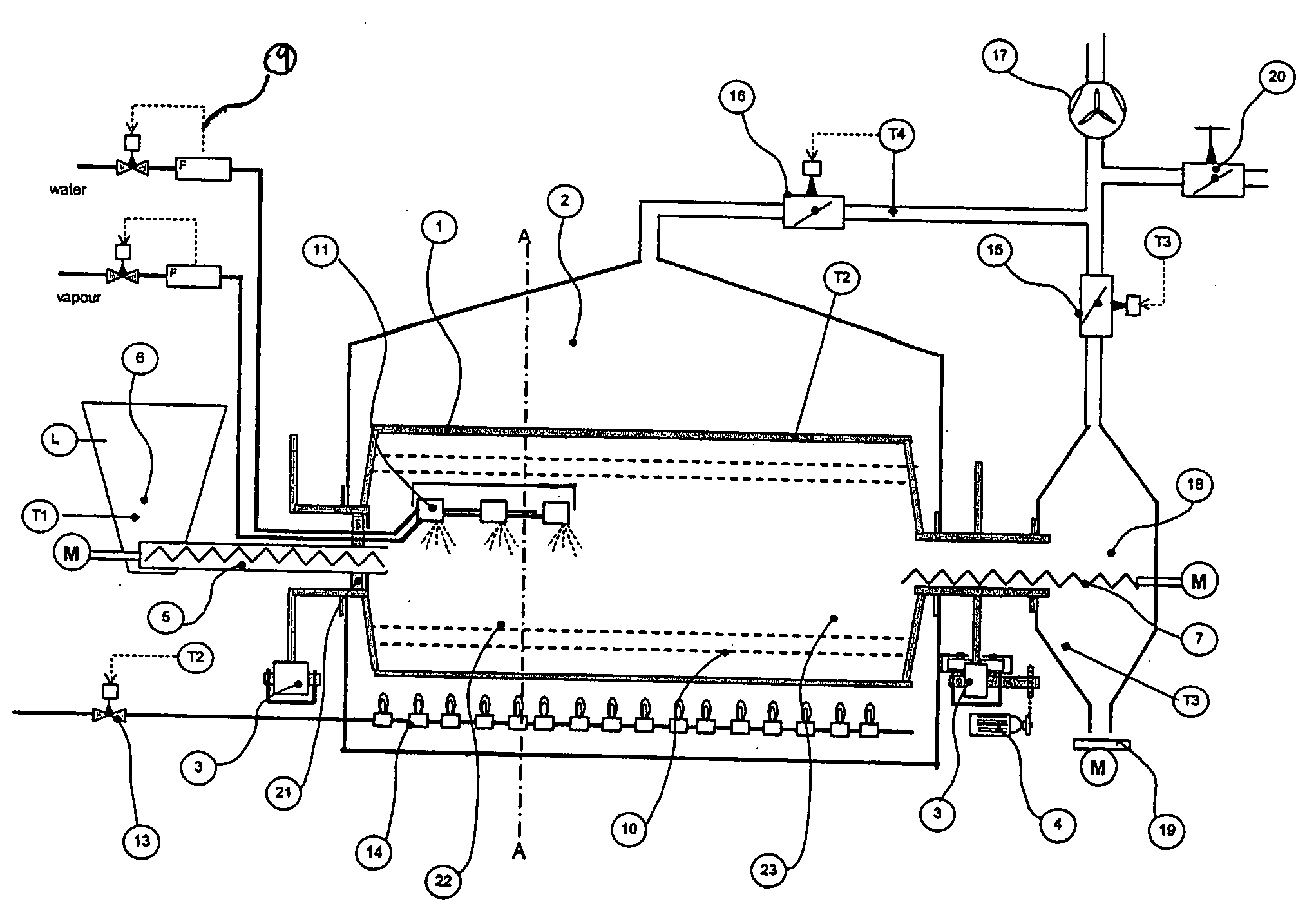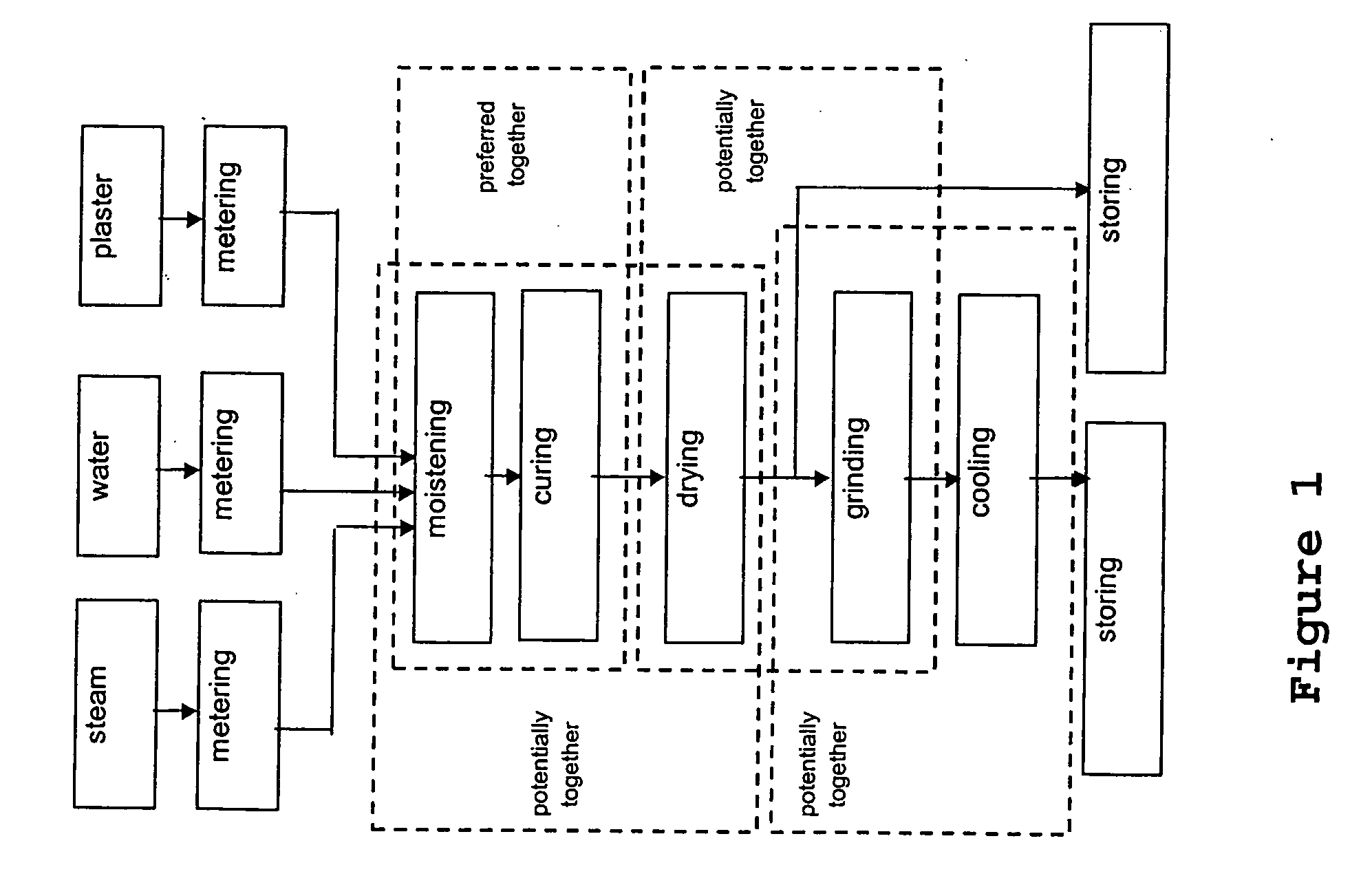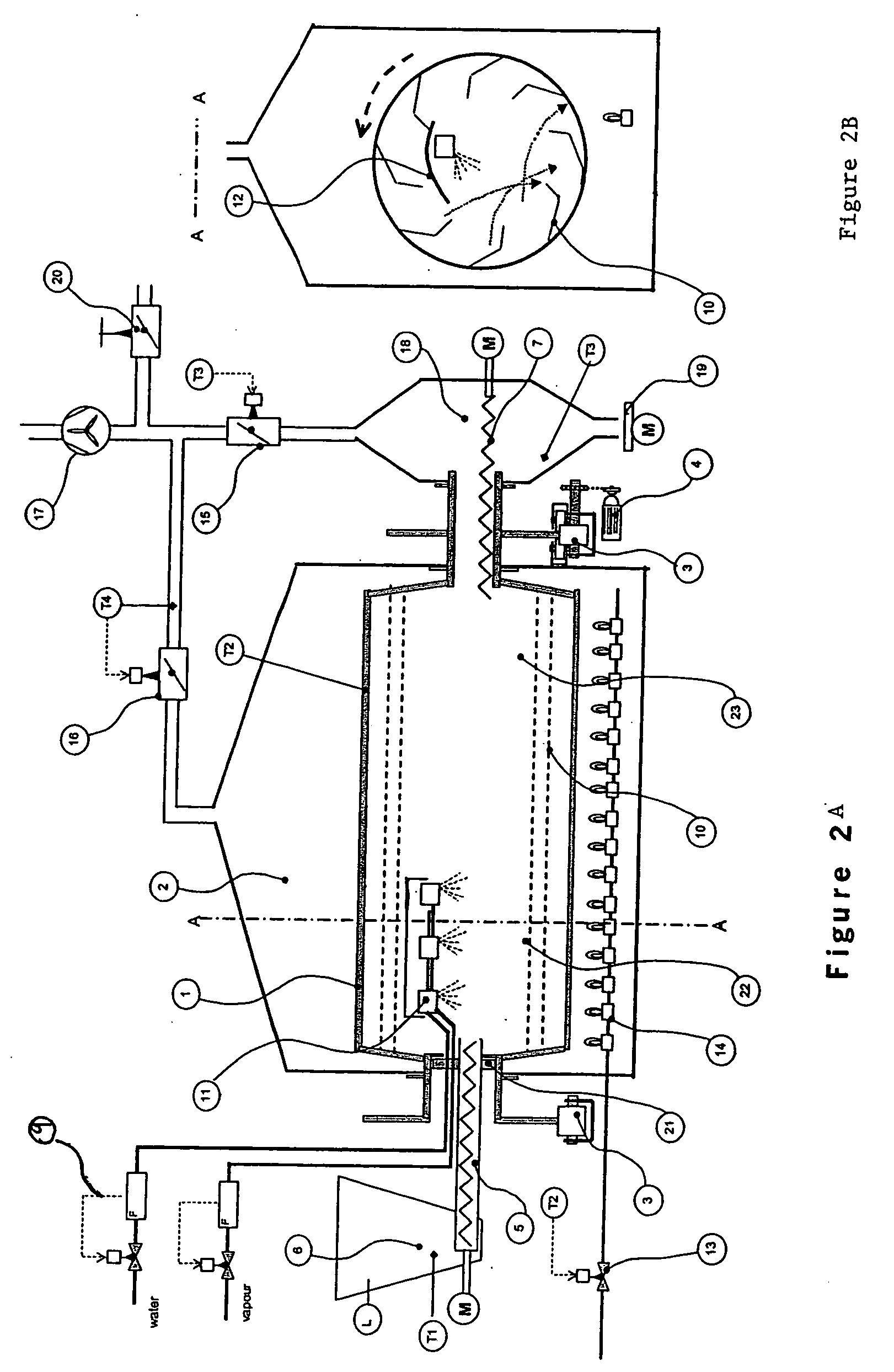Method and apparatus for stabilizing plaster
a technology of gypsum plaster and stabilizing apparatus, which is applied in the direction of calcium/strontium/barium sulfate, drying machines, magnesium compounds, etc., can solve the problems of stress on the physical microstructure of b-hh, affecting the stability of plaster, and affecting the appearance of plaster, so as to prevent product build-up.
- Summary
- Abstract
- Description
- Claims
- Application Information
AI Technical Summary
Benefits of technology
Problems solved by technology
Method used
Image
Examples
Embodiment Construction
[0048] As indicated above, the invention provides a process of stabilizing a calcined β-hemihydrate plaster by moistening and curing and optionally drying comprising the steps of:
[0049] a) providing a heated HH-plaster preferably at temperatures over 100° C.;
[0050] b) feeding the hot plaster in a moistening device having walls heated to at least 100° C.;
[0051] c) injecting water and / or steam into the moistening device in conditions that such not yet moistened surfaces of the plaster are exposed to the injected water and / or steam;
[0052] d) maintaining an atmosphere in the moistening device at a level of the dew point in the range of 75 to 99° C.; feeding the moistened blend into a curing device e) maintaining an atmosphere in the curing device above 75° C., preferably between 75 and 99° C. , for at least 3 minutes, preferably between 4 and 15 minutes;
[0053] f) feeding the moistened and cured blend into a drying device; and
[0054] g) drying said moistened and cured blend.
[0055] ...
PUM
| Property | Measurement | Unit |
|---|---|---|
| temperatures | aaaaa | aaaaa |
| temperature | aaaaa | aaaaa |
| temperature | aaaaa | aaaaa |
Abstract
Description
Claims
Application Information
 Login to View More
Login to View More - R&D
- Intellectual Property
- Life Sciences
- Materials
- Tech Scout
- Unparalleled Data Quality
- Higher Quality Content
- 60% Fewer Hallucinations
Browse by: Latest US Patents, China's latest patents, Technical Efficacy Thesaurus, Application Domain, Technology Topic, Popular Technical Reports.
© 2025 PatSnap. All rights reserved.Legal|Privacy policy|Modern Slavery Act Transparency Statement|Sitemap|About US| Contact US: help@patsnap.com



